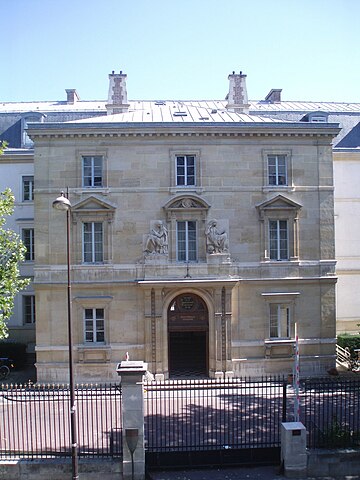École normale supérieure is the name for a number of French higher education bodies grand écoles, comparable to universities. In France, universities have to accept all students with a baccalaureat. This is different for the so-called Grandes Ecoles, which includes the Ecoles normales supérieures. These schools do not have the obligation to accept anyone, and only a select few can attend studies at these institutions, most of whom will become part of the elite in various areas. Universities have faculties, and each faculty is responsible for one branch of studies. the ENS usually group similar subjects at one school, and do not have faculties.

The history of écoles normales supérieures goes back to 30 October 1794 (9 brumaire an III), when École normale de l'an III was established during the French Revolution.[1] From 1808 to 1822 the school was subsequently reestablished as pensionnat normal, before being recreated in 1826 and in 1830 it was named École normale. The current name comes from 1845, when the word supérieure was added to the so-called écoles normales, which were institutes created in 1845 for the training of primary school teachers.
The Savary Law of 1984 restructured higher education in France and classified écoles normales supérieures within the category of établissements publics à caractère scientifique, culturel et professionnel.[2]
As of January 2014, there are four existing ENSes:
- École normale supérieure (Paris), located in Paris
- École normale supérieure de Lyon, located in Lyon
- École normale supérieure Paris-Saclay, located in Gif-sur-Yvette, near Paris
- École normale supérieure de Rennes, located in Rennes
A twin institution has existed in Italy since its foundation by Napoleon Bonaparte, the Scuola Normale Superiore in Pisa.
Notable Alumni
- Louis Althusser
- Michel Foucault
- Jean-Charles Darmon (1982), French literary critic.
- Jacques Derrida
- Jean-Paul Sartre
References
Wikiwand in your browser!
Seamless Wikipedia browsing. On steroids.
Every time you click a link to Wikipedia, Wiktionary or Wikiquote in your browser's search results, it will show the modern Wikiwand interface.
Wikiwand extension is a five stars, simple, with minimum permission required to keep your browsing private, safe and transparent.
